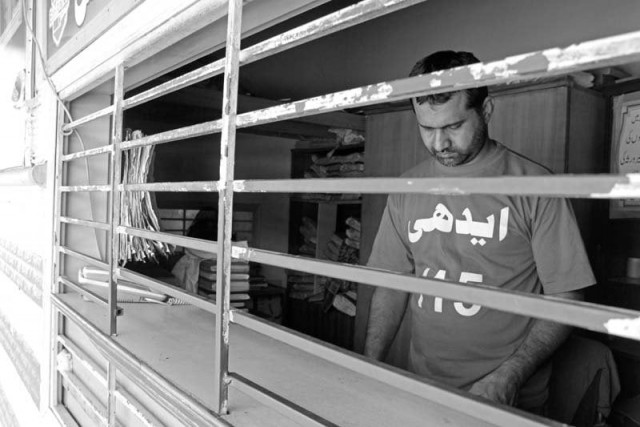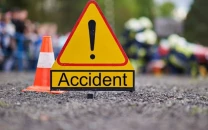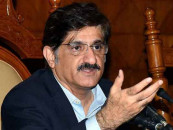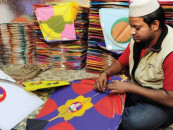The daunting task of identifying the city’s unclaimed bodies
CPLC, Edhi find it hard in cases where victims do not have CNICs or NADRA record.

An attendant stands at the reception where people come to register bodies (Above). A special desk has been set up by the CPLC at the Edhi morgue to identify bodies (Below). PHOTOS: AYESHA MIR/EXPRESS
Since the Edhi morgue in Sohrab Goth - the largest in the city with a capacity to hold up to 300 bodies — receives an average of 10 bodies a day, it is nearly impossible for Edhi workers to identify the unclaimed bodies and contact the families. So they bury nearly six of such bodies every day in their graveyard in Mawach Goth.
Mass funeral: 82 unidentified bodies buried in Edhi graveyard
These bodies would have been left on the streets had it not been for the Edhi Foundation, the country’s largest charitable organisation. Save for small morgues present inside a few health facilities, a city as violent as Karachi only has Edhi’s morgue at Sohrab Goth to fall back on.
Under this new project, the charity organisation and CPLC officials will use the National Database and Registration Authority’s (NADRA) biometric data to identify unclaimed bodies.

For this purpose, a special desk was set up by the CPLC at the Edhi morgue in October last year. So far, the officials have been able to identify over 1,500 bodies and managed to contact the families. The officials are hopeful this project will help the police identify the suspects killed in encounters with law enforcers.
Old ways
The government has failed to address the issue of unclaimed bodies, forcing charitable organisations to take up this task. In the last 24 years, over 80,000 unclaimed bodies have been buried at Edhi’s graveyard in Mawach Goth.
The traditional procedure was for the morgue administration to take snaps with available details of the bodies and keep it in their album, before burying the bodies. Usually, the bodies were kept at the morgue for five days on average before being buried.
If families were looking for their loved ones, they would visit the morgue and identify their loved ones from the photos. With the new biometric identification process, Edhi volunteers now approach the families first. “An Edhi volunteer came to our house and informed us about the death of my brother,” said Aslam, the brother of Javed whose body was found from Landhi.
Not an easy job
Even after the biometric identification, the officials find a hard time identifying the bodies, admitted Edhi spokesperson Anwar Kazmi. “The biggest problem is the unavailability of computerised national identity cards (CNICs) as most of the deceased persons are drug addicts who died of natural deaths and don’t have CNICs or any record with NADRA,” he said.
Identification of dead bodies
The system is only effective as long as the deceased person has proper fingerprints and a CNIC. “It will not work in cases, such as bomb blasts and fires, as the victims lose their fingerprints,” explained CPLC chief Zubair Habib. “[Otherwise] it is an easy process,” he said. “After obtaining the fingerprints, we send them to NADRA for verification or identification and it takes only a day.”
Habib pointed out that the CPLC will continue this exercise at other morgues in the city.
Families’ refusal
Sometimes, the families of the deceased person do not receive the body or approach the Edhi administration, even after knowing their loved ones have died. “Sometimes, we see that the relatives or family members refuse to take the bodies of their loved ones even after identifying them,” he added.

He gave the example of Bilal Ali Shah, whose body was found from Lyari’s Kalakot area. Even after his identification through the biometric system, his family refused to take the body. He was later buried in the Edhi graveyard. Ashraf Jafar’s family also refused to take his body for burial when Edhi officials approached them. He was a drug addict and his body was found in Soldier Bazaar.
Published in The Express Tribune, June 13th, 2016.



















COMMENTS
Comments are moderated and generally will be posted if they are on-topic and not abusive.
For more information, please see our Comments FAQ